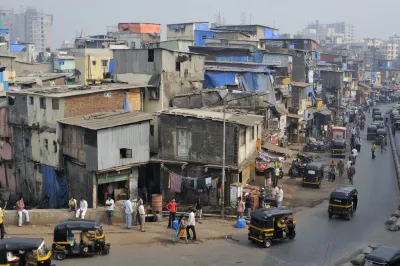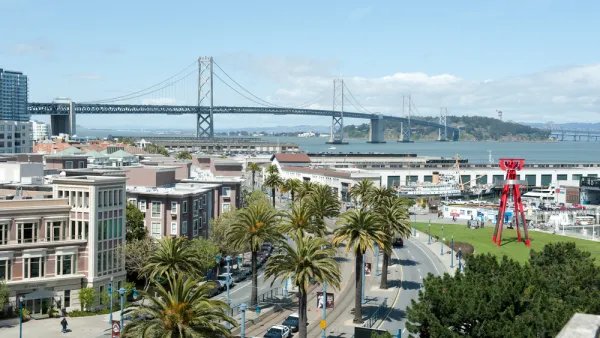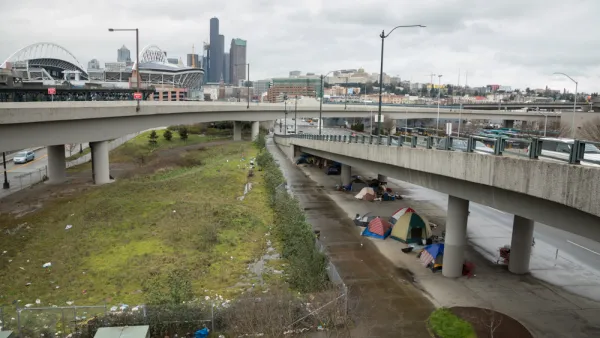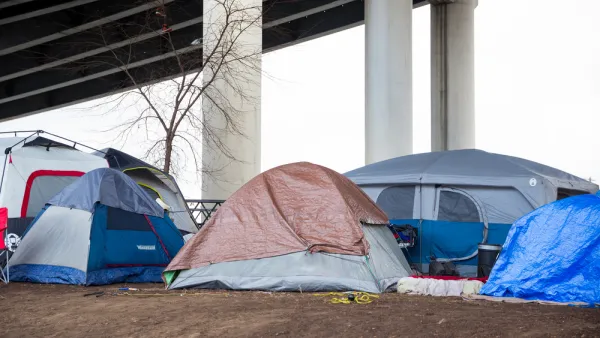In photographs and written observations of a recent trip to Mumbai, India, former SPUR Director Jim Chappell queries how the lives of the poorest people there compare to the lives of low-income Americans.

India has long been emblematic of poverty and inequality. Mother Teresa is known for her work with poor of Kolkata (fka Calcutta). But U.S. poverty and inequality has been on the rise for decades, with the visibility of abject poverty at a nearly unprecedented level. In many U.S. cities, the co-existence of the housed and the homeless is strained, as the number of homeless living in streets and parks diminishes the livability of the cities for even its wealthier citizens. Jim Chappell, a planning consultant and former Executive Director of SPUR, recently traveled to India. As planners and architects can relate, recreational travel for those in the planning professions is never fully recreational. Travel quickly turns into an inquiry of what works differently in the respective destination.
Chappell was struck by the impression that the poorest people of India seemed less disconnected and less socially isolated than their counter-parts in the United States. Additionally, they seemed to have access to work and while housing was substandard, he saw far fewer people sleeping exposed, in the open, in public spaces. While admittedly not an academic or scientific, Chappell provides some food for thought about how we in the United States are failing our poor:
India is a tremendously different culture, an ancient culture with religions and family structures and social structures different from ours. I am not qualified to draw any conclusions from it. But somehow they have managed to provide work that is necessary for society and meaningful enough to the individuals that they do it. And the people have a place to live, very substandard though it may be.
For more detail on Chappell’s observation, as well as photographs, please visit the source article.
FULL STORY: What are we doing wrong?

Analysis: Cybertruck Fatality Rate Far Exceeds That of Ford Pinto
The Tesla Cybertruck was recalled seven times last year.

National Parks Layoffs Will Cause Communities to Lose Billions
Thousands of essential park workers were laid off this week, just before the busy spring break season.

Retro-silient?: America’s First “Eco-burb,” The Woodlands Turns 50
A master-planned community north of Houston offers lessons on green infrastructure and resilient design, but falls short of its founder’s lofty affordability and walkability goals.

Test News Post 1
This is a summary

Analysis: Cybertruck Fatality Rate Far Exceeds That of Ford Pinto
The Tesla Cybertruck was recalled seven times last year.

Test News Headline 46
Test for the image on the front page.
Urban Design for Planners 1: Software Tools
This six-course series explores essential urban design concepts using open source software and equips planners with the tools they need to participate fully in the urban design process.
Planning for Universal Design
Learn the tools for implementing Universal Design in planning regulations.
EMC Planning Group, Inc.
Planetizen
Planetizen
Mpact (formerly Rail~Volution)
Great Falls Development Authority, Inc.
HUDs Office of Policy Development and Research
NYU Wagner Graduate School of Public Service




























